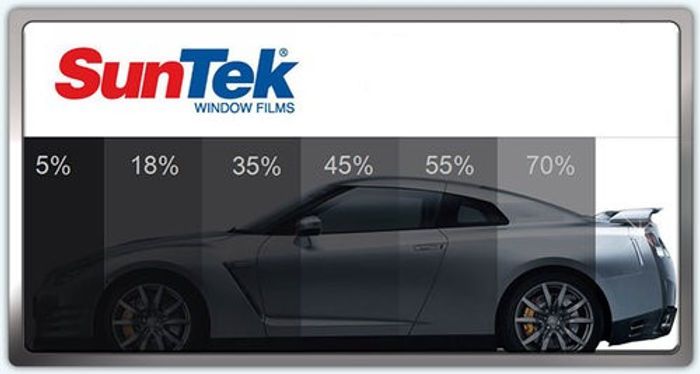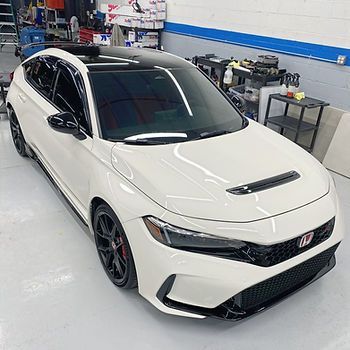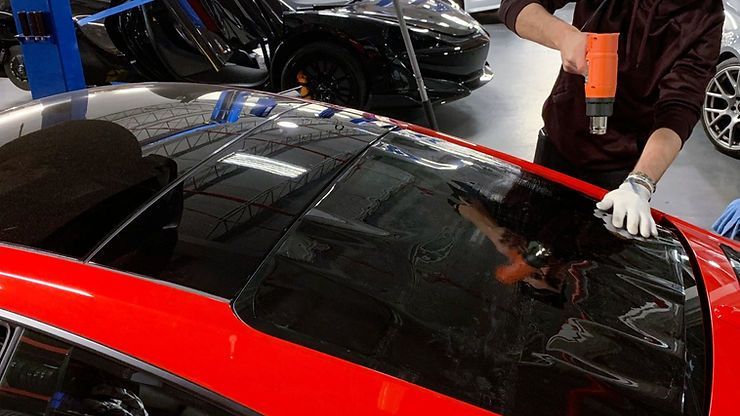Behind the Tint: Understanding Window Tinting Percentages
GET A FREE ESTIMATEWhether you're a car enthusiast or simply looking to enhance the aesthetics and comfort of your vehicle, tinting your car can be an easy and affordable option.
When it comes to window tinting, you may have noticed that there are a variety of percentages associated with different tints. These numbers can be confusing and can leave you uncertain about which option to choose.
In this blog post, we will decode what these percentages mean and guide you toward choosing the best percentage for your vehicle.

What Do the Percentage Levels Mean?
The percentage levels in window tints represent the amount of light transmission allowed through the tinted windows. It signifies how dark or light the tint will appear from both the inside and outside of your vehicle. Essentially, the lower the percentage, the darker the tint. The higher the percentage, the lighter the tint.
Understanding LOCAL Regulations
Before delving deeper into the different tint levels, it's important to understand that every region has its own regulations regarding the darkness of tints. These regulations typically stipulate the maximum allowable percentage of tint darkness for different windows of a vehicle, such as the windshield, front side windows, rear side windows, and rear window.
Common Percentage Levels
5-20% (Dark Tint)
Tints in this range provide a high level of privacy and significant heat and glare reduction. However, they may limit visibility, especially during nighttime driving. Such dark tints are typically favored for aesthetic appeal and may be commonly used on the rear windows. 5% tint is commonly known as "limo tint."
20-35% (Medium Tint)
This range strikes a balance between privacy, heat reduction, and visibility. Medium tint percentages offer adequate protection against harmful UV rays and reduce glare, making them popular for side windows and rear windshields.


35-50% (Light Tint)
Lighter tints in this range provide minimal privacy while still offering some level of heat reduction and UV protection. They allow good visibility both during the day and at night, making them suitable for windshields where visibility is crucial for safe driving.
50%+ (Nearly Transparent)
Tints in this range are almost transparent and provide minimal privacy. They allow maximum visibility while still offering some level of UV protection. These tints are commonly used for legal compliance on front windshields or for those who prefer a more natural view.
Choosing the Right Percentage
Selecting the ideal tint percentage largely depends on your personal preferences, local regulations, and specific needs. Consider the following factors:
- Privacy requirements: Do you prefer maximum privacy or a balance between privacy and visibility?
- Climate: Does your area experience intense heat or glare, necessitating a darker tint for better protection?
- Visibility: Will the tint affect your visibility during nighttime driving?
- Legal requirements: Ensure compliance with local regulations regarding tint darkness.
Understanding the percentage levels in automotive window tinting empowers you to make an informed decision while enhancing the aesthetics, comfort, and safety of your vehicle.
Remember to research your local regulations, consider your specific needs, and consult with professionals to select the perfect tint percentage that suits you best.
With the right tint, you can enjoy a cooler and stylish ride, while protecting yourself and your vehicle's interior from the harsh effects of the sun. Choose what tint fits you best and set up an appointment with Automotive Specialty Wraps today.



